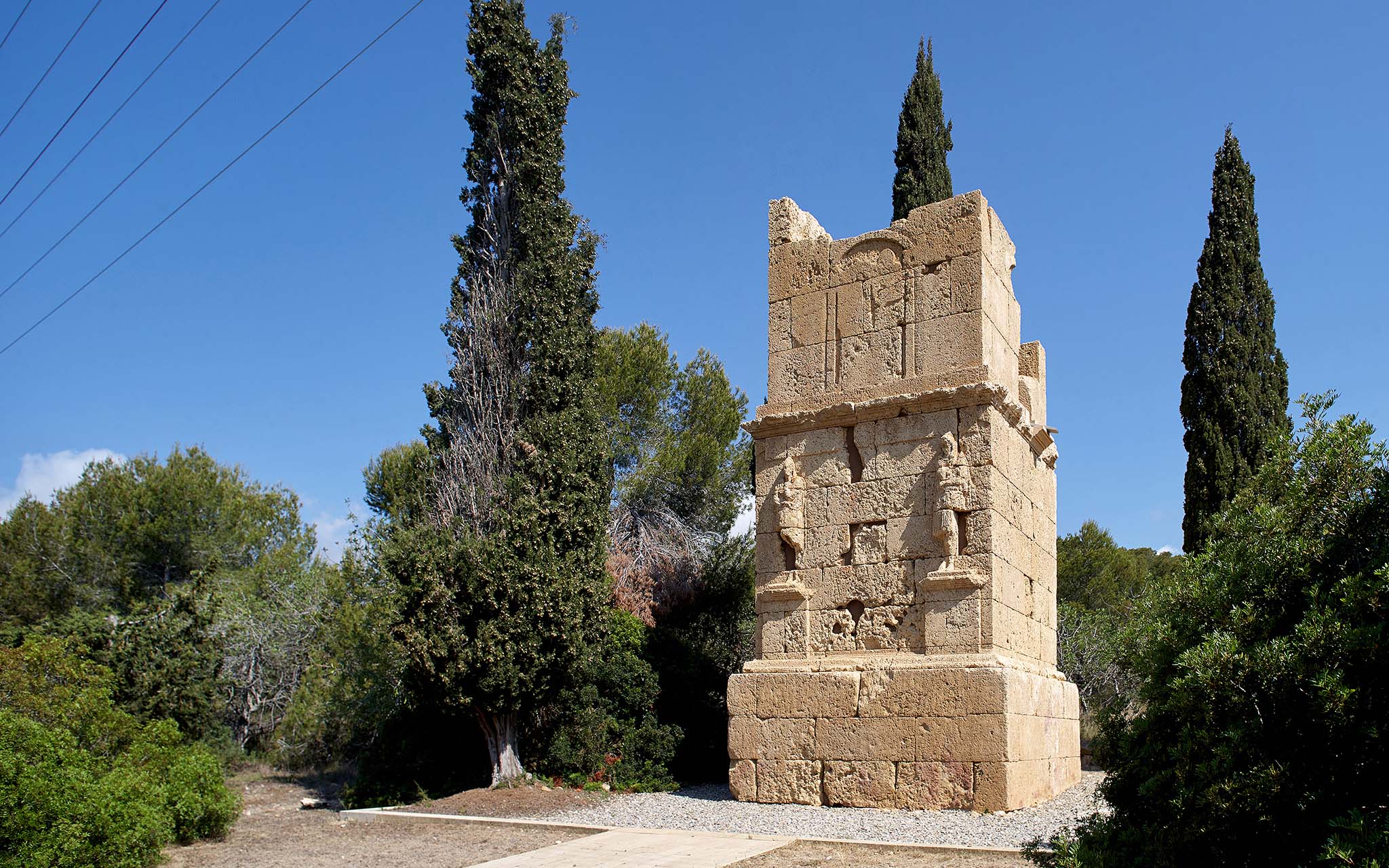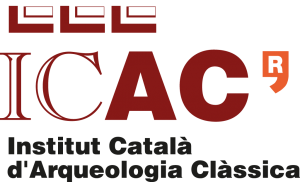SCIPIO TOWER
In an excellent state of conservation, the so-called Scipio Tower is in fact a monumental tower-shaped mausoleum. The structure, crowned with a pyramidal cover that was painted and decorated with reliefs still visible today, was created to house the burial of an important member of Tarraco’s society. Its location next to the Via Augusta was due to the Roman law which prohibited burials within the city limits.
ARCHITECTURE
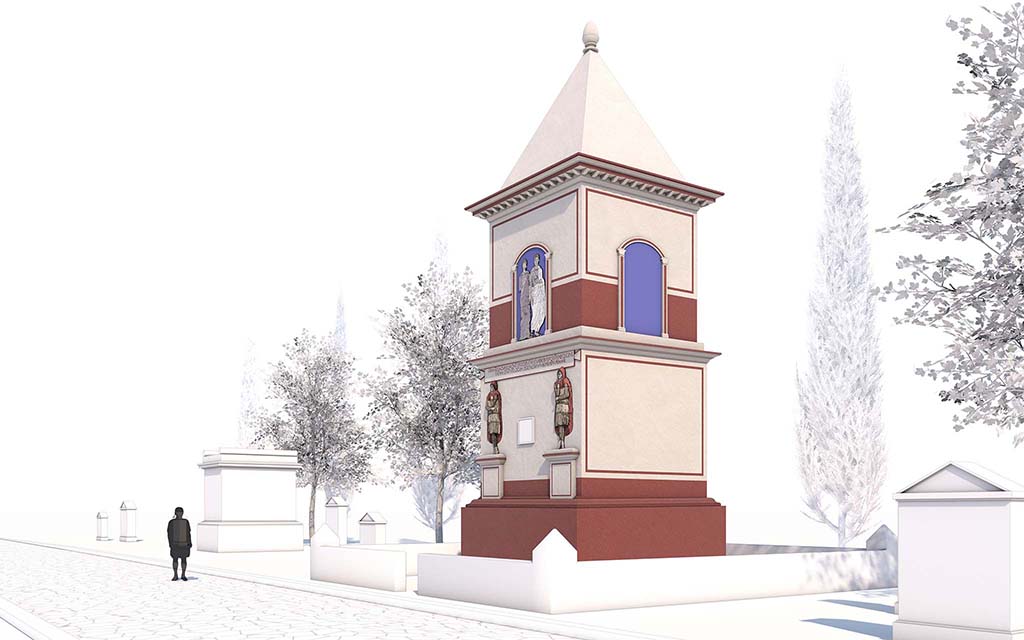
The structure known as the Scipio Tower is a tower-shaped funerary monument. This building is constructed with ashlars, with a nearly square floor plan (4.47 by 4.72 m), with a preserved height of approximately 9 metres. Due to its characteristics, this mausoleum forms part of the tradition of tower-shaped tombs known as «different-shaped aedicules» typical of the late republican era and contemporaneous with similar tombs found in Italy, Gaul and the north of Africa. Given its treatment and sculpted decoration, this family tomb is indicative of the introduction of the Eastern cults of the Magna Mater into Tarraco, in this case from the cultured perspective of one of the colony’s greatest families.
ATTIS
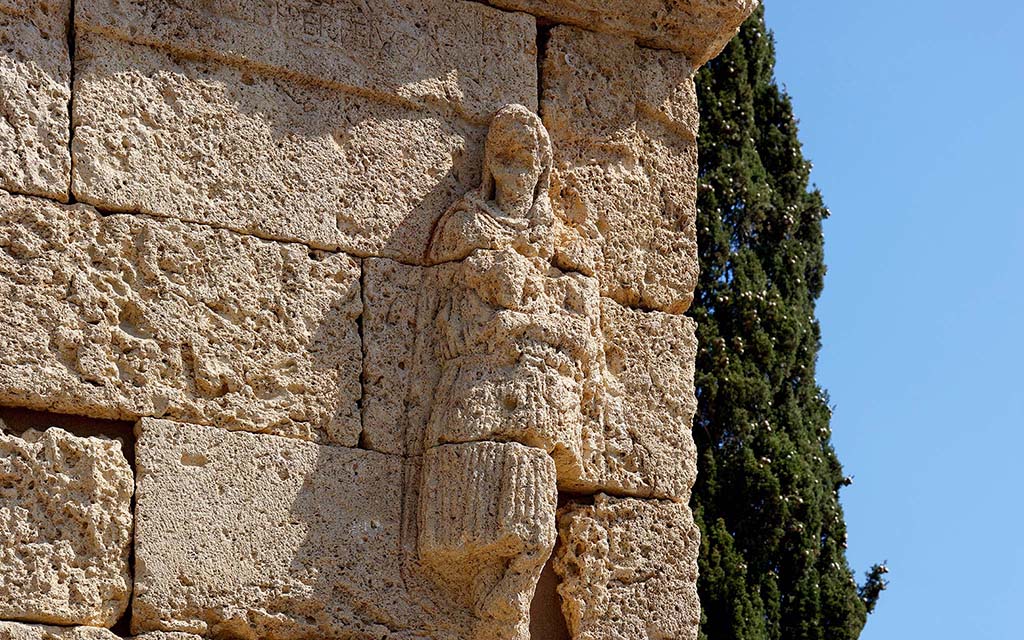
Two sculpted reliefs of Attis are represented in the building’s central body. This divinity, with a markedly Eastern nature, is the companion of the goddess Cibeles, and is linked to the annual rites of death and resurrection. The two figures of Attis represent funerary geniuses depicted with Eastern vestments and clothing, Phrygian hats, bracae or baggy trousers with their hands crossed. The Attis had a layer of stucco coating that still preserves traces of the polychromy in red. The intense colours were, thus, one of the decorative characteristics of the monument.
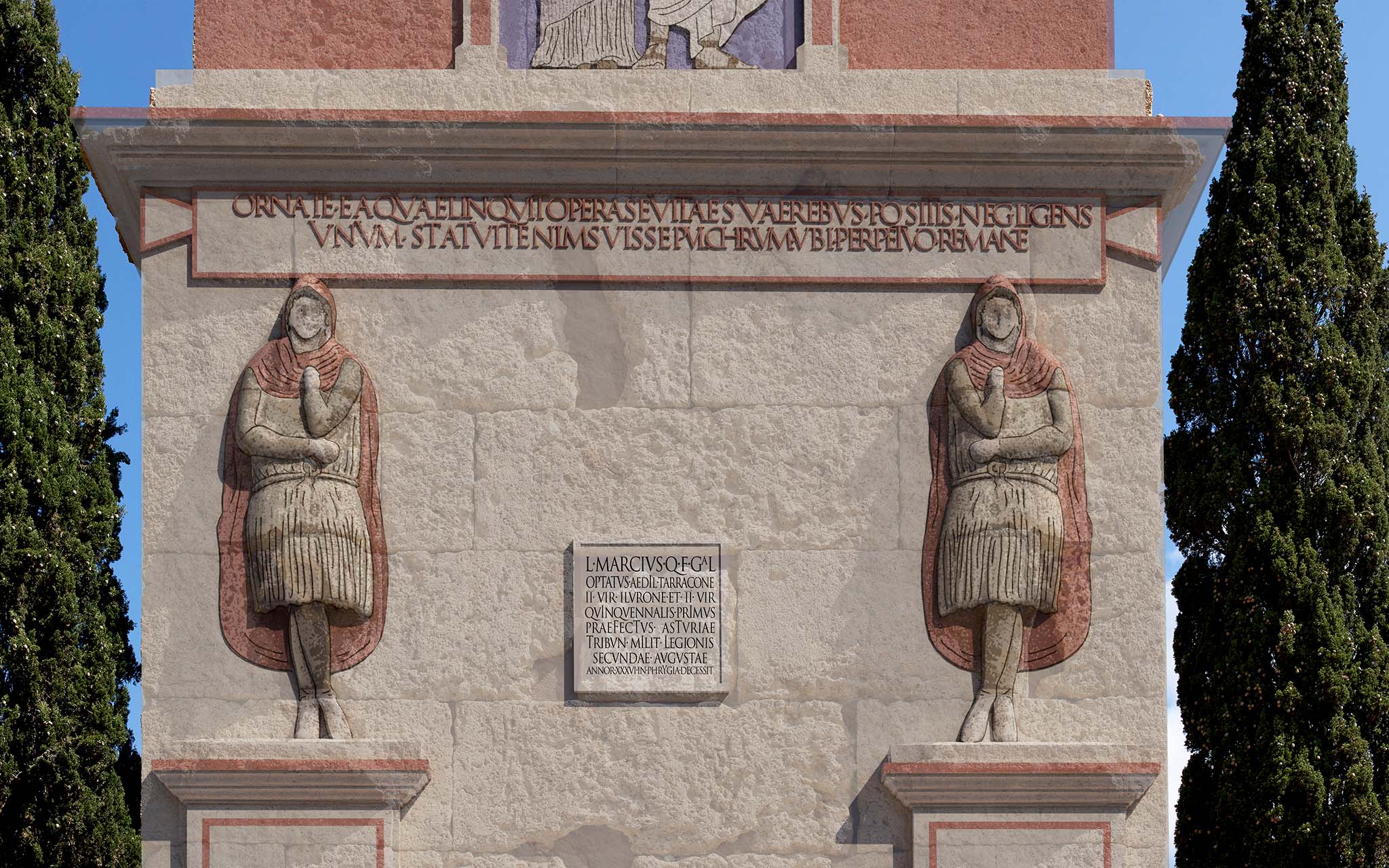
MONUMENTAL INSCRIPTION
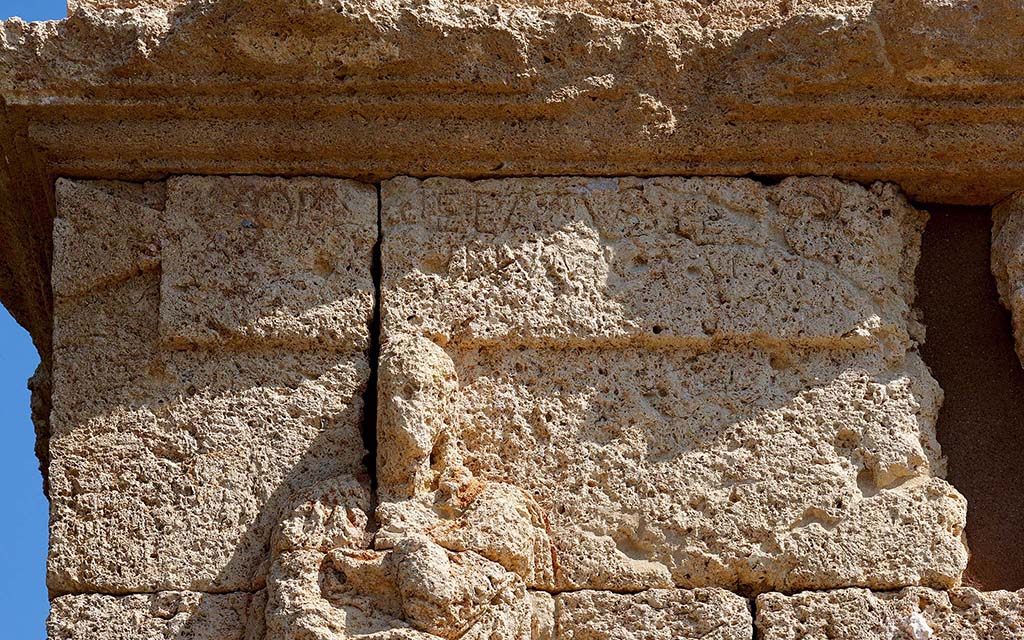
A monumental inscription presided over the architectural whole. Although the text is poorly preserved and nearly illegible, epigraphers have been able to restore it. The text is a funeral oration inscribed over two overlapping lines inserted in the frame of a tabula ansata. The transcription states “Ornate ea quae linquit opera, se vitae suae rebus positis negligens / unum statuit enim suis epulchrum ubi perpetuo remaneant”, which translates as: «Exalt the works that he left upon his death. Forgetting himself, he erected for his people a single tomb in which he must remain forever».
MISSING INSCRIPTION
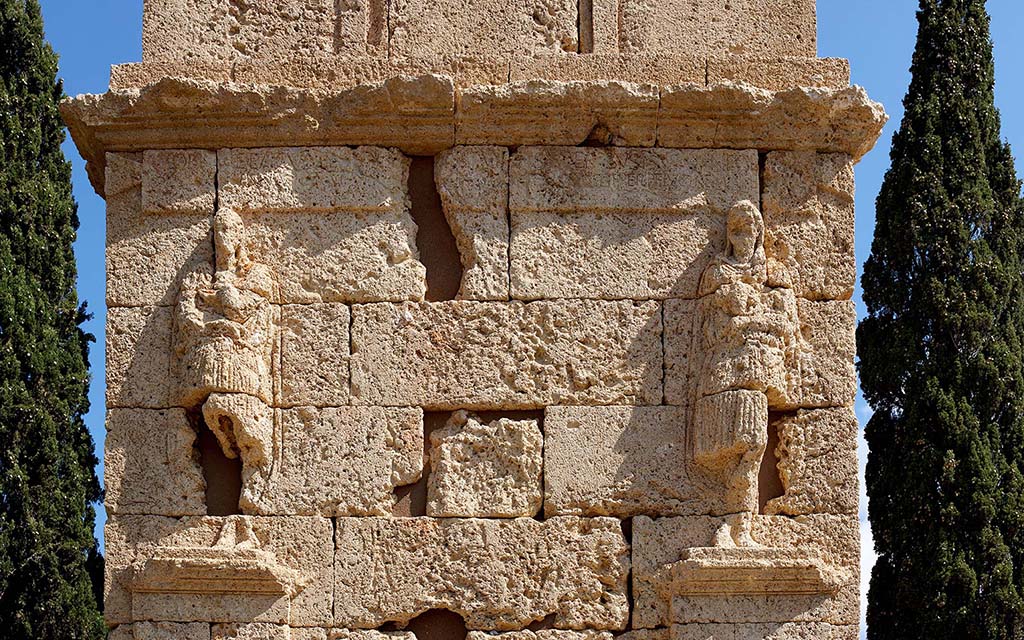
A second inscription formed part of the mausoleum, but it has disappeared. This epigraph was situated between the two Attis, on a square white marble or limestone plate. We know that this text existed thanks to the analysis of the building, and also through a note by Pons d’Icart dating from the year 1572. We also have different testimonies which show how the ecclesiastical hierarchy’s desire to acquire antiques led to the plundering and the extraction of the epigraphic piece.
BAS-RELIEF
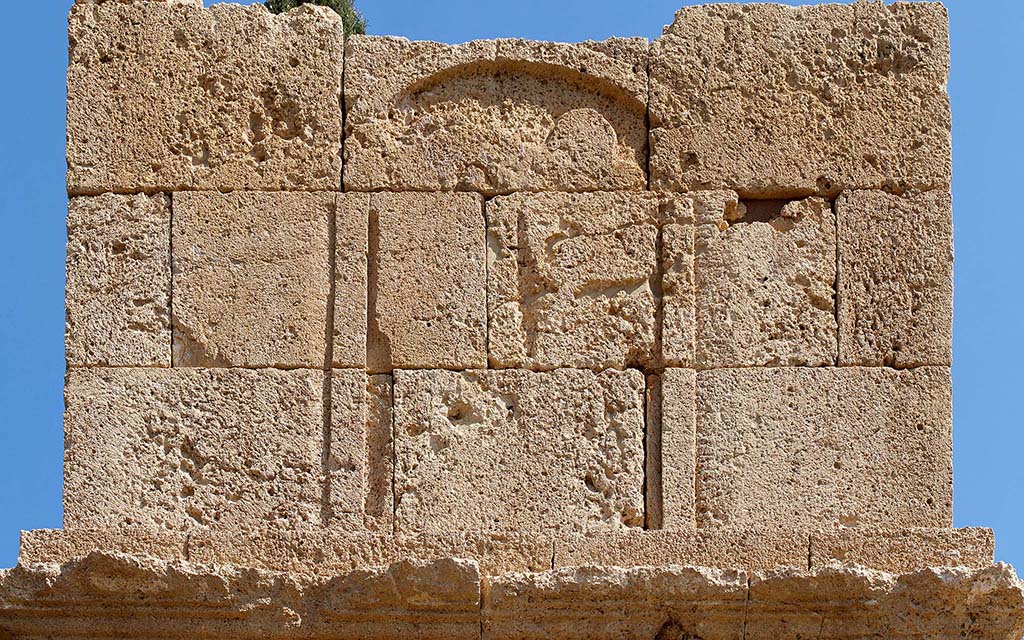
In the third upper body of the mausoleum, on the front façade, a bas-relief can be found with two standing figures located under a simple lowered arch – presumably the couple whose remains were laid to rest in the tower. It is only possible to see the outline of their forms, and it is likely that both were in reality sculpted directly on the mortar that covered them. The arch repeats itself on the two side faces. As such we can imagine that the tower was prepared in order to successively welcome different marriages from the family’s descendants.
